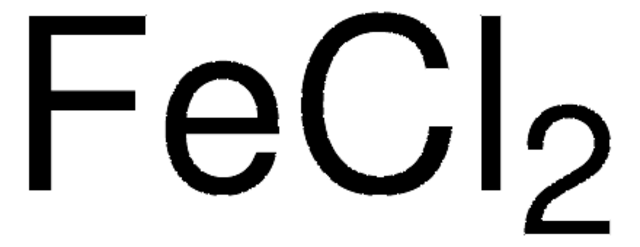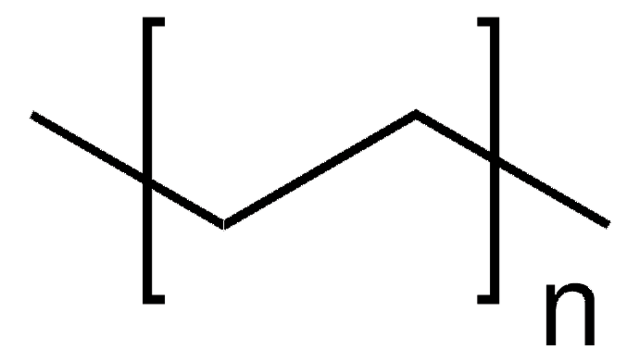940534
Iron(III) chloride hexahydrate

≥99.99% trace metals basis
Synonym(s):
Ferric chloride hexahydrate, Iron(III) chloride hexahydrate
About This Item
Recommended Products
description
product type - High purity Salts
Quality Level
assay
≥99.99% trace metals basis
form
powder or crystals
greener alternative product characteristics
Design for Energy Efficiency
Learn more about the Principles of Green Chemistry.
sustainability
Greener Alternative Product
impurities
(≤100ppm trace metals basis)
mp
37 °C
solubility
water: soluble
anion traces
nitrate (NO3-): ≤20 ppm
sulfate (SO42-): ≤20 ppm
cation traces
Al: ≤10 ppm
B: ≤10 ppm
Ba: ≤10 ppm
Ca: ≤10 ppm
Co: ≤10 ppm
Cr: ≤10 ppm
Cu: ≤10 ppm
K: ≤10 ppm
Mg: ≤10 ppm
Mn: ≤10 ppm
Na: ≤10 ppm
Ni: ≤10 ppm
Pb: ≤10 ppm
Si: ≤10 ppm
Ti: ≤10 ppm
Zn: ≤10 ppm
greener alternative category
SMILES string
Cl[Fe](Cl)Cl.O
InChI
InChI=1S/3ClH.Fe.6H2O/h3*1H;;6*1H2/q;;;+3;;;;;;/p-3
InChI key
NQXWGWZJXJUMQB-UHFFFAOYSA-K
Related Categories
General description
Application
- To synthesize a trimetallic Metal–Organic Frameworks (Fe/Ni/Co/(Mn)-MIL-53) by solvothermal method as a electrocatalyst that exhibits a volcano-type oxygen evolution reaction (OER)activity as a function of compositions.
- To synthesis Fe(III) based MOF such as MIL-53(Fe) by solovothermal method.These MOFs have demonstrated promising photocatalytic properties for both the reduction of Cr(VI) and the oxidation of dyes . Furthermore, they have shown potential in the degradation of organic pollutants when exposed to visible LED light, with persulfate serving as a mediator.
- To synthesize of Magnetite Fe3O4 nanoparticles by wet chemical reduction method.Additionally, monodisperse Fe3O4/C core-shell nanosheets can be synthesized using the carbothermal reduction method for greatly improved microwave absorption.
- To synthesize of Fe3O4@rGO composite electrodes with a core-void-shell structure for Lithium-ion batteries.The resulting electrodes exhibit enhanced electrochemical performance, surpassing that of electrodes based solely on the bare Fe3O4 material. Notable improvements include higher discharge-charge capacity, improved cycling stability, and enhanced rate capability.
Iron(III) chloride hexahydrate serves as a crucial precursor for the synthesis of iron-based composites utilized in wastewater treatment applications. These composites demonstrate excellent potential for effectively treating wastewater and removing contaminants.
signalword
Danger
hcodes
Hazard Classifications
Acute Tox. 4 Oral - Eye Dam. 1 - Skin Irrit. 2
Storage Class
11 - Combustible Solids
wgk_germany
WGK 1
flash_point_f
Not applicable
flash_point_c
Not applicable
Choose from one of the most recent versions:
Certificates of Analysis (COA)
It looks like we've run into a problem, but you can still download Certificates of Analysis from our Documents section.
If you need assistance, please contact Customer Support
Already Own This Product?
Find documentation for the products that you have recently purchased in the Document Library.
Customers Also Viewed
Our team of scientists has experience in all areas of research including Life Science, Material Science, Chemical Synthesis, Chromatography, Analytical and many others.
Contact Technical Service












